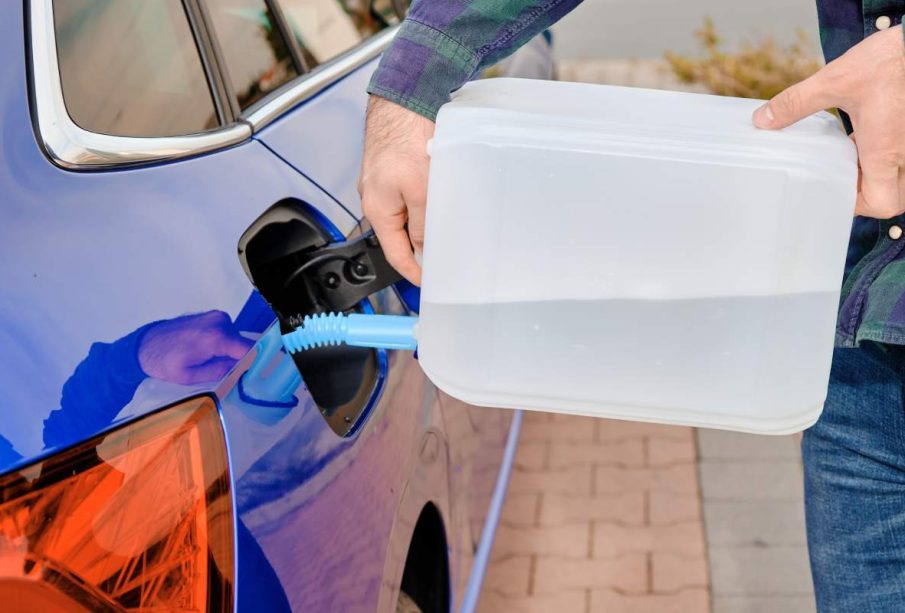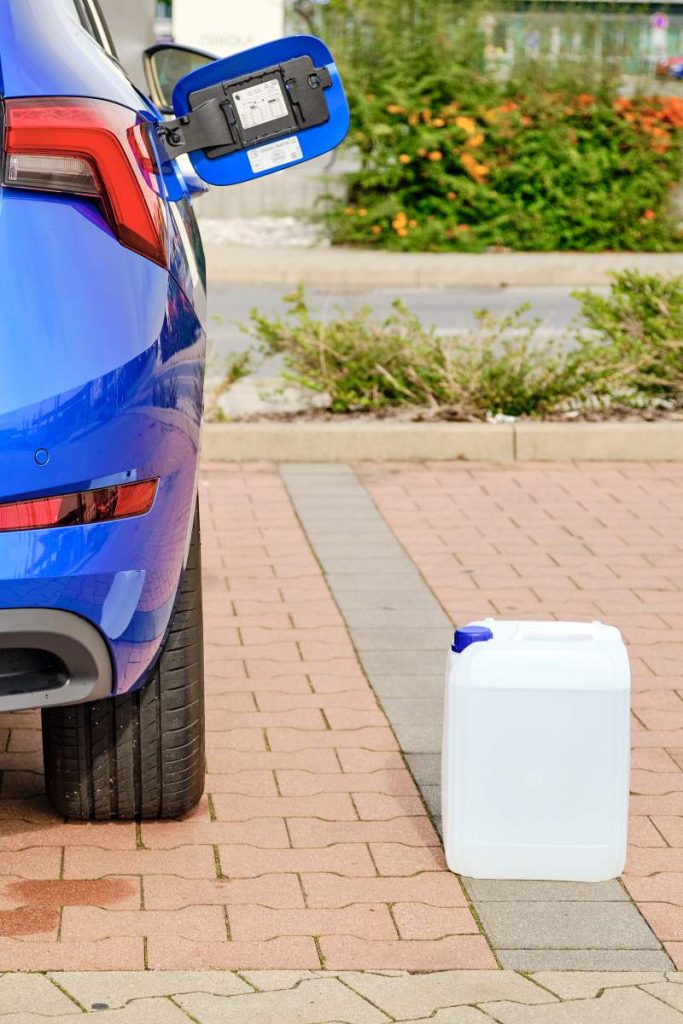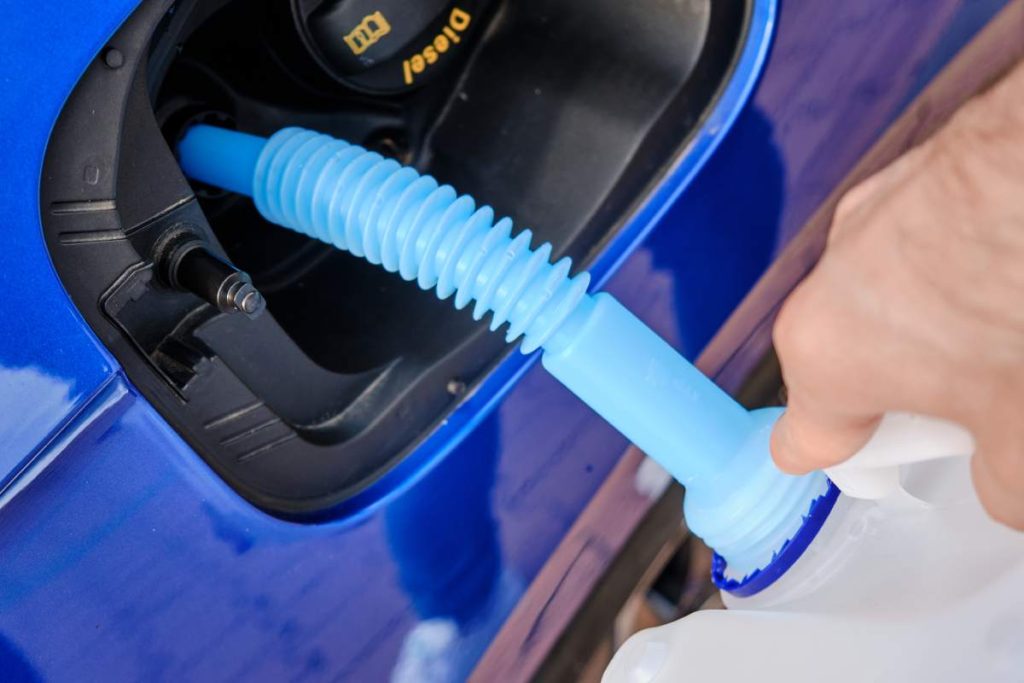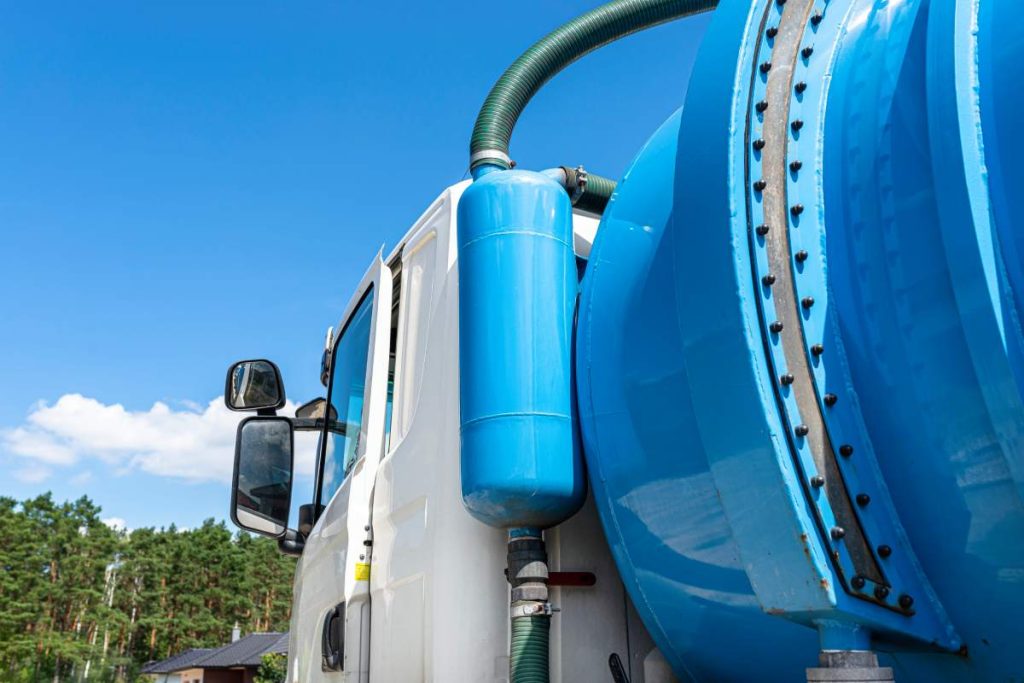What Should You Do If You Accidentally Put AdBlue in the Petrol Tank?

AdBlue has become a crucial component for modern diesel vehicles, especially as stricter emission standards push for cleaner exhaust systems.
Whether you’re driving a truck, bus, or a newer diesel car, understanding what AdBlue is, how it works, and how to handle it is important to ensure your vehicle runs efficiently and meets environmental regulations.
In this article, we’ll explain what AdBlue is, how it functions in your vehicle, what to do if it’s mistakenly added to the wrong tank, and how much it costs in Australia.
You might also read:
- Innovations in Ramp and Trailer Design: Enhancing Safety and Efficiency
- What All the Signs On Cars’ Console Mean?
What is AdBlue? How Does It Work?
AdBlue is a solution designed to reduce harmful emissions from diesel engines, making them more environmentally friendly. It’s used in vehicles equipped with Selective Catalytic Reduction (SCR) systems, mainly trucks, buses, and newer diesel cars. AdBlue itself isn’t a fuel or an additive but plays a crucial role in reducing harmful nitrogen oxide (NOx) emissions, which are a major contributor to air pollution.
What is AdBlue Made Of?
AdBlue is made from a mixture of 32.5% urea and 67.5% deionised water. Urea, a compound that occurs naturally in mammals, is synthetically produced for industrial use. Though it sounds complex, AdBlue is a non-toxic, colourless liquid that’s easy to handle and safe for the environment.
How Does AdBlue Work?
AdBlue works hand-in-hand with the SCR system to reduce emissions. When diesel fuel is burned in a vehicle’s engine, harmful gases like nitrogen oxide are produced. Here’s a simple breakdown of the process:
- Diesel Combustion: The diesel engine burns fuel to produce power, but this process releases pollutants, including NOx.
- SCR System Activation: The SCR system is located in the exhaust system of the vehicle. As the gases pass through it, AdBlue is injected into the exhaust.
- Chemical Reaction: When AdBlue meets the hot exhaust gases, it breaks down into ammonia and carbon dioxide. The ammonia then reacts with the nitrogen oxide in the SCR catalyst, converting the harmful gases into harmless nitrogen and water vapour, which are released into the air.
This entire process helps vehicles meet strict emissions standards, reducing pollution and limiting their environmental impact.
Why Is AdBlue Important?
The introduction of AdBlue and SCR systems has significantly helped reduce nitrogen oxide emissions in diesel vehicles. NOx emissions contribute to smog and respiratory issues, so lowering these levels improves air quality, especially in cities and areas with heavy traffic. Additionally, the use of AdBlue helps manufacturers comply with environmental regulations, such as the Euro 6 standards in Europe and equivalent standards worldwide, which require vehicles to produce lower emissions.
Do All Diesel Vehicles Use AdBlue?
Not all diesel vehicles use AdBlue. It’s mostly found in larger, modern diesel vehicles, such as trucks, buses, and newer cars that meet recent emissions standards. Older vehicles and smaller diesel engines may not have SCR systems, meaning they don’t need AdBlue.
If your vehicle uses AdBlue, there’s usually a separate tank for it, and a warning light will come on when it’s running low. It’s important to top up the AdBlue tank as required because the vehicle won’t function properly without it. In some cases, if the AdBlue tank is empty, the car may not start at all.
How to Refill AdBlue
Refilling AdBlue is simple. Many service stations, especially those catering to trucks, have AdBlue pumps. Alternatively, you can purchase containers of AdBlue from auto supply stores and fill the tank yourself. The process is no more complicated than topping up your windscreen washer fluid.
Does AdBlue Affect Fuel Efficiency?
AdBlue doesn’t directly impact fuel efficiency. However, by using the SCR system to reduce emissions, the engine can operate more efficiently than other emissions reduction methods, which can indirectly contribute to better fuel economy.

If You Accidentally Put AdBlue in the Petrol Tank or Vice Versa, What Should You Do?
If you accidentally put AdBlue in the petrol (or diesel) tank or vice versa, it’s essential to act quickly to prevent serious damage to your vehicle. Here’s what you should do in either case:
If You Put AdBlue in the Petrol or Diesel Tank
AdBlue should never be added to the fuel tank. It’s a separate fluid used only for the Selective Catalytic Reduction (SCR) system and must go in its designated AdBlue tank. If you accidentally put AdBlue in your petrol or diesel tank, follow these steps:
- Do Not Start the Engine: Starting the engine will circulate the AdBlue through the fuel system, causing extensive damage to fuel lines, injectors, and the engine. If you haven’t started the engine, the damage will be less severe.
- Get the Vehicle Towed: You’ll need to get your car towed to a mechanic. Do not attempt to drive it, as even short distances can cause damage.
- Have the Fuel Tank Drained: The mechanic will drain the fuel tank and flush the system to remove any traces of AdBlue. If caught early, this will prevent further damage.
- Inspect for Damage: If AdBlue has entered the fuel system, it may crystallize and damage components, so your mechanic may need to inspect and potentially replace parts like fuel filters or injectors.
If You Put Petrol or Diesel in the AdBlue Tank
AdBlue tanks are designed only for AdBlue, and introducing fuel to this system can severely damage the SCR system. Here’s what to do:
- Do Not Start the Engine: As with AdBlue in the fuel tank, don’t start the vehicle if you’ve added the wrong fluid. Running the engine with fuel in the AdBlue system will cause significant damage to the SCR system and exhaust.
- Get the Vehicle Towed: Have your vehicle towed to a service centre or mechanic who can safely drain the AdBlue tank and flush the system.
- Inspect the SCR System: Fuel in the AdBlue system can destroy sensitive components like the SCR catalyst, so you may need a thorough inspection to check for potential damage.
- Repair or Replace Damaged Components: If the SCR system has been damaged, parts like the pump, sensors, or catalyst may need to be replaced, which can be costly.
What Are the Consequences of Driving After Mixing AdBlue and Fuel?
Driving your vehicle after mistakenly adding AdBlue to the fuel tank or fuel to the AdBlue tank can lead to costly repairs. These include:
- Engine Damage: AdBlue in the fuel tank can cause significant damage to the fuel system, requiring parts like the fuel pump and injectors to be replaced.
- SCR System Failure: Fuel in the AdBlue system can destroy the SCR system, leading to expensive repairs.
- Costly Repairs: In severe cases, the damage could amount to thousands of dollars in repairs, including the replacement of major components.
Preventing Mix-Ups
To avoid such costly mistakes, always double-check the cap and label before filling your vehicle with either fuel or AdBlue. Most vehicles have blue caps or clear labels for the AdBlue tank, making it easier to distinguish between the two.
In short, if you accidentally mix AdBlue and fuel, don’t start the engine and seek professional help immediately. The sooner the mistake is corrected, the less likely your vehicle will suffer from extensive damage.










